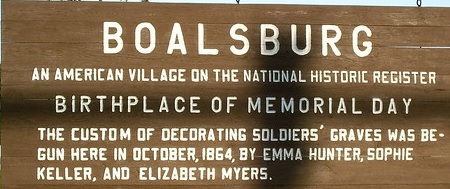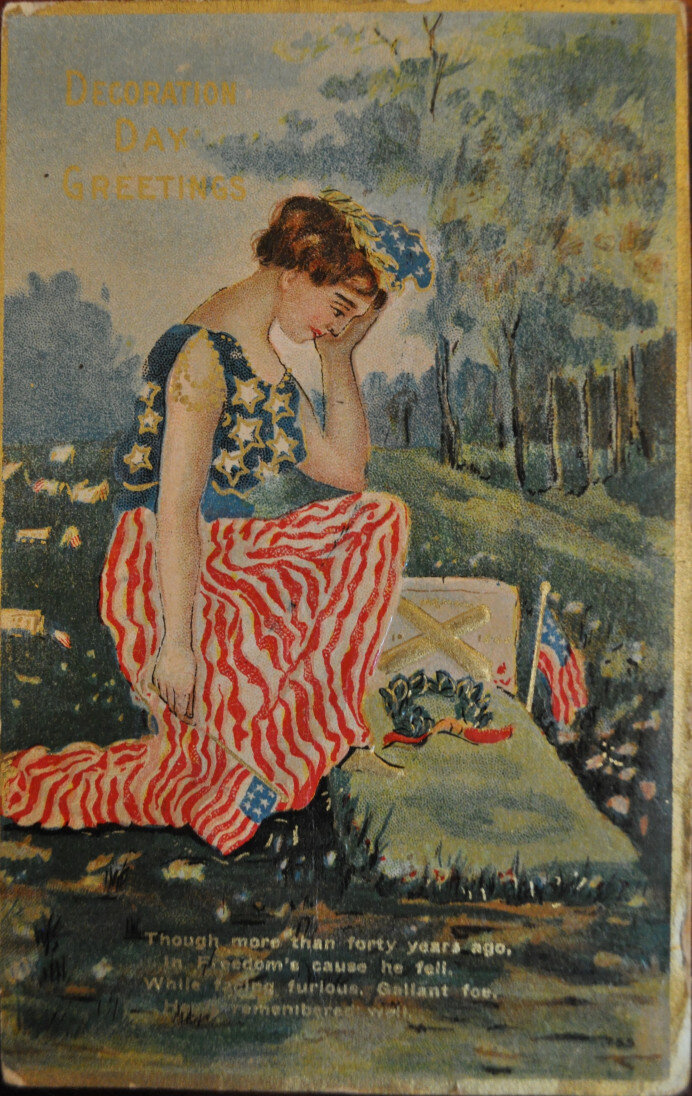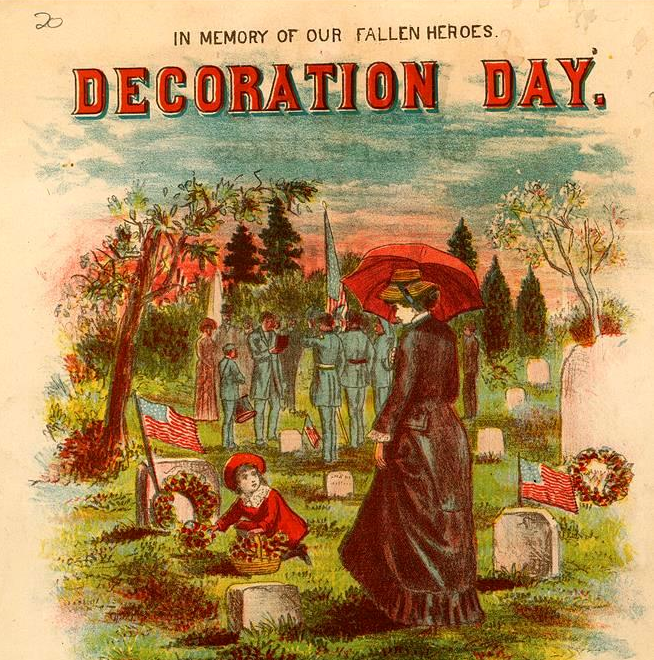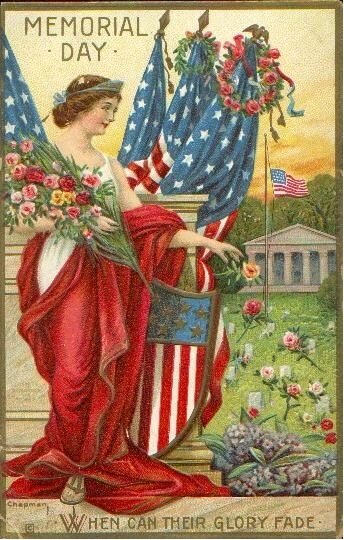Decoration Day
Over six hundred thousand soldiers perished in the Civil War, a number that exceeds the total American casualties in all our other wars combined. Citizens, both North and South, needed to find a way to remember and memorialize the dead.
People began to decorate the graves to honor the dead. This Decoration Day later became known as Memorial Day. Several different towns and cities compete to be known as the originator of the holiday. The small village of Boalsburg, near Penn State University, claims to be the birthplace of Memorial Day. There, in 1864, two women decided to decorate the graves of their husbands who were Civil War casualties along with the other graves in the cemetery.
Lyndon Johnson’s Presidential proclamation of May 1966 declared Waterloo, NY as the founder of Memorial Day, stating: “…Congress has officially recognized that the patriotic tradition of observing Memorial Day began one hundred years ago in Waterloo, New York.” However, many historians disagree with that assessment.
Since most of the Civil War battles were in the South, most of the cemeteries are in the Southern States. These graveyards contain both Union and Confederate soldiers. In April 1866, several women in Columbus, Mississippi decided to decorate the graves of the 1862 Battle of Shiloh victims. This may have been the first ceremony honoring soldiers from both sides of the War. Inspired, Poet Francis Miles Finch wrote a poem, “The Blue and the Grey.” The first verse:
By the flow of the inland river,
Whence the fleets of iron have fled,
Where the blades of the grave-grass quiver,
Asleep are the ranks of the dead:
Under the sod and the dew,
Waiting the judgment-day;
Under the one, the Blue,
Under the other, the Gray
The last Confederate army surrendered on April 26, 1865. Several Southern States set aside that date, April 26th, as an annual date to honor the dead. Known as Confederate Memorial Day, it apparently is still a holiday in some Southern States. In the North, Union military veterans founded the Grand Army of the Republic as a fraternal organization. In 1868, its leader, General John Logan, perhaps to match what was occurring in the South, declared May 30th to be an annual Memorial Day to honor Union War Casualties. He chose May 30th as a date when flowers would be in bloom throughout the nation. His declaration, in part:
The 30th day of May 1868, is designated for the purpose of strewing with flowers or otherwise decorating the graves of comrades who died in defence of their country during the late rebellion, and whose bodies now lie in almost every city, village, and hamlet churchyard in the land…Their soldier lives were the reveille of freedom to a race in chains, and their deaths the tattoo of rebellious tyranny in arms. We should guard their graves with sacred vigilance.
Ohio Congressman and future President, Major General James Garfield, gave the first annual Decoration Day address at Arlington National Cemetery. He started his remarks: “I am oppressed with a sense of the impropriety of uttering words on this occasion. If silence is ever golden, it must be here beside the graves of fifteen thousand men, whose lives were more significant than speech, and whose death was a poem, the music of which can never be sung.”
Garfield went on to describe that America was a free, peaceful nation, ruled by democratic principles. He explained that men were inspired to arms to save the Union and its founding values. His speech concluded: “What other spot so fitting for their last resting place as this under the shadow of the Capitol saved by their valor? Here, where the grim edge of battle joined; here, where all the hope and fear and agony of their country centered; here let them rest, asleep on the Nation’s heart, entombed in the Nation’s love!”
Today we have controversy over various monuments that honor Southerners and the Confederate cause. In a Memorial Day address, one of our recent Presidents addressed this controversy:
“On April 25, 1866, about a year after the Civil War ended, a group of women visited a cemetery in Columbus, Mississippi, to place flowers by the graves of Confederate soldiers who had fallen at Shiloh. As they did, they noticed other graves nearby, belonging to Union dead. But no one had come to visit those graves or place a flower there. So they decided to lay a few stems for those men too, in recognition not of a fallen Confederate or a fallen Union soldier, but a fallen American.”
These remarks, given by President Obama on Memorial Day in 2010, an excellent way to look for unity, are as appropriate today as in the immediate aftermath of the Civil War. (Full text, click here)








